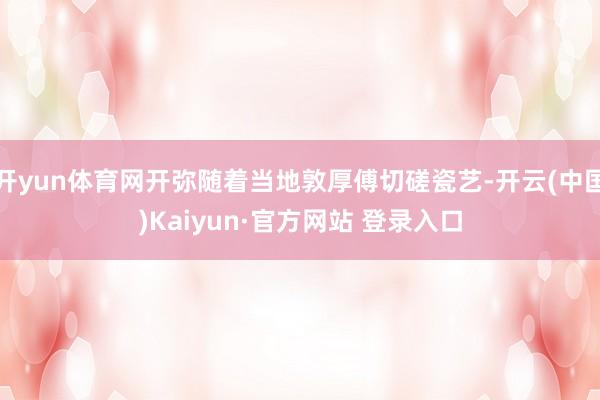开yun体育网开弥随着当地敦厚傅切磋瓷艺-开云(中国)Kaiyun·官方网站 登录入口

French ceramic artist Camille Grandaty has been living in Jingdezhen开yun体育网, China, for nearly a decade. She would learn ceramic-making techniques with local masters and regularly meet with ceramic artists from around the world. Over the years, she established her own studio, developing a creative style that blends Eastern and Western artistic elements.
Despite her extensive practice and study, one might assume Camille fully understands the intricacies of Chinese ceramics. However, she admits to feeling a "distance" from the craft due to cultural differences. Fascinated by the origins of ancient Chinese ceramic-making techniques and the secrets behind Jingdezhen's status as the world's ceramic capital for over 1,000 years, Camille is eager to deepen her understanding of this remarkable tradition.
This summer, she joined the Path Seekers, together with Gong Liang, honorary director of the Nanjing Museum. They embarked on a journey along the ancient Kaolin Road, located about 50 kilometers east of Jingdezhen. Gong highlighted the historical significance of this seemingly modest route, which once served as a vital artery for transporting Kaolin clay-the key ingredient in porcelain production. The advanced "Binary Formulations Approach", which involves mixing Kaolin clay with porcelain stone, played a pivotal role in Jingdezhen's emergence as a global ceramic hub for over a millennium.
Each step along the ancient road brought new insights. The team explored mining sites, historic streets, and ancient docks, as well as kilns, porcelain factories, and museums. At the museums, Camille discovered the profound cultural exchange between Eastern and Western civilizations through the intricate designs of "export porcelain". During a visit to a young ceramic artist's studio, she admired how traditional craftsmanship seamlessly integrates with modern design concepts. Inspired by these experiences, Camille and Gong collaborated to create a blue-and-white porcelain bowl, which they named Yuanfen-a Chinese term meaning "destiny" or "special connection".
Transporting Kaolin was just one step forward in refining raw materials. The dedication of craftsmen who spend their entire lives mastering a single craft-an inheritance of skill and spirit-is truly the soul of Chinese porcelain. Amid the bustling crowds of Taoxichuan at dusk, where history and modernity converge, Camille reflected on her journey. Through Path Seekers, she gained a deeper appreciation of the art form and the country she has called home for the past ten years.

本年,是法国陶瓷艺术家开弥(Camille Grandaty)在江西景德镇生涯的第十年。在这里,开弥随着当地敦厚傅切磋瓷艺,与中外年青陶艺师如期约聚,她也逐渐成立了我方的责任室,创作作风主打一个土洋结合。
十年里,总以为对中国瓷再熟练不外了,但是开弥已经以为“隔”。
隔在何处?隔在文化的那一层。“我作念瓷,但不知谈中国古代制瓷最横蛮的武艺从哪儿来?为什么景德镇能成为千年瓷齐?一直上手作念,但更念念深入了解精髓。”
本年夏天,开弥扈从“Path Seekers 问谈中国”徒步小组,与南京博物院名誉院长龚良先生一齐,来到景德镇以东约50公里处的高岭古谈。龚良先生告诉她,不要小看这短短几公里的古谈,以前,它是运载高岭土的紧迫通谈;不要小看高岭土,那然则制瓷的要津原料,恰是高岭土和瓷石夹杂配比“二元配方”的跳跃,加快建立了“千年瓷齐”。
从古谈起程,移步换景,走过矿区、古街、古船埠,走进窑厂、瓷厂、博物馆,在颜色特有的“外售瓷”展品里了解东西方漂后的考虑互鉴,在年青陶艺家的责任室观赏传统工艺与当代盘算的“牵手”,开弥与龚良先营业思意思所至,协调完成青花瓷碗手工画坯,起名“分缘”。
高岭土的运载仅仅完了原料的进阶,而“一辈子只作念一件事”的匠心与传承,可谓中国瓷的灵魂。夜幕下的陶溪川,东谈主潮涌动,迂腐又年青,随着“问谈”之旅的束缚深入,开弥对生涯了十年的这个国度有了更深远的息争。

